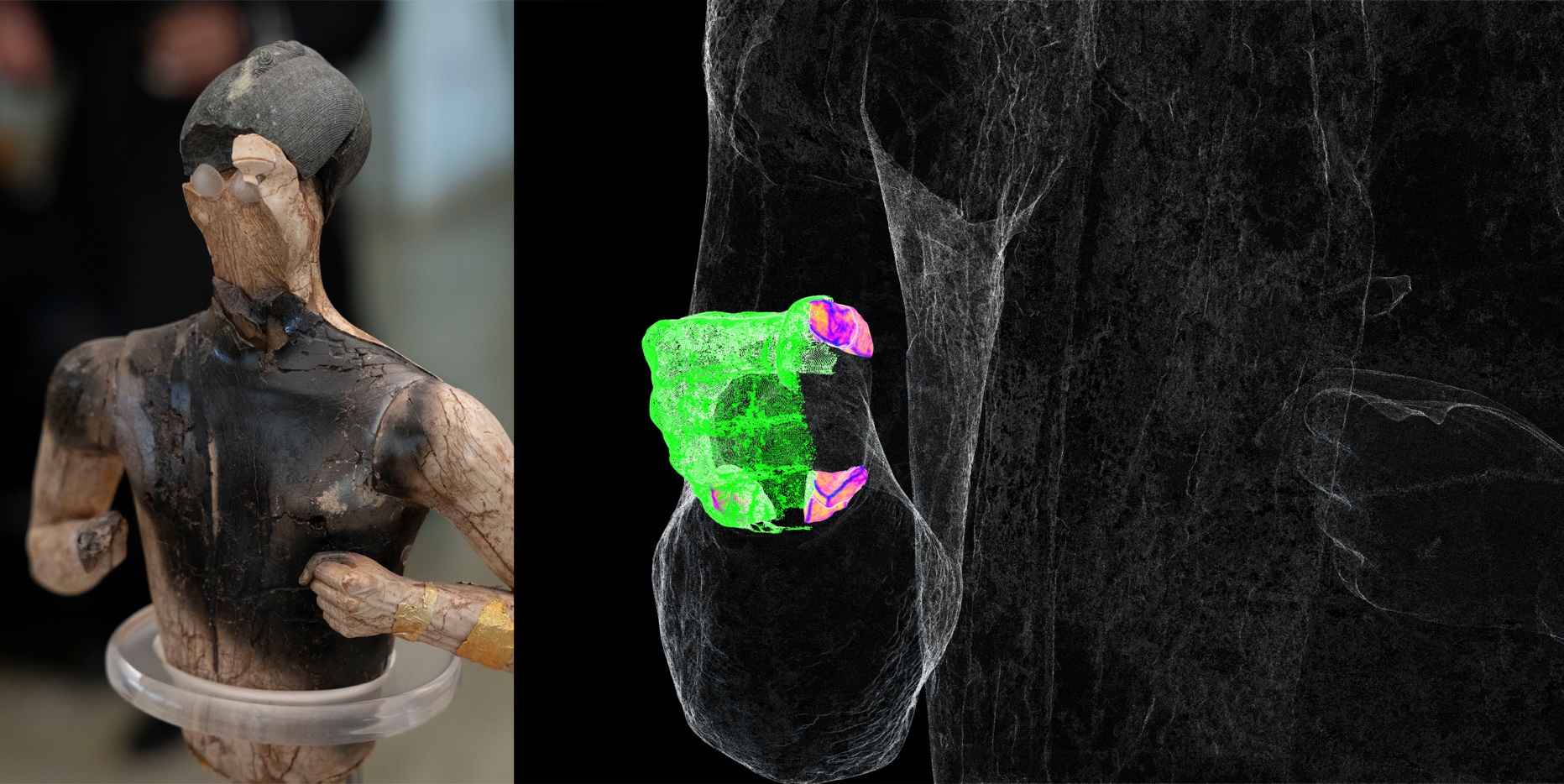Researchers from the Andreas Pittas Art Characterization Laboratories (APAC Labs) at the Cyprus Institute participated in the 3D documentation and digital analysis of the Kouros of Palaikastro, (Late Bronze Age Crete), a unique gold-and-ivory statuette of extraordinary craftsmanship.
The research was conducted as part of the TALOS-project at the Université Catholique de Louvain, under the direction of Prof. Jan Driessen and in collaboration with Dr Alexander MacGillivray, of the British School in Athens, and The Cyprus Institute. The Greek Ministry of Culture/Archaeological Museum of Siteia, Crete (Dr Xrisa Sofianou) provided the logistics and local support. This research is part of the on-going activities within the EU-funded project 4CH, aiming at establishing a European Competence Center for the Conservation of Cultural Heritage.
During the 1987 British School at Athens excavations of a small area in the Bronze Age or Minoan settlement of Palaikastro (Crete), fragments of a human statue in ivory, stone and gold were found, buried beneath the tumble of a fire destruction that dated around 1450 BC. Throughout the following excavation campaigns, more fragments were retrieved. Initial restoration showed that the fragments belonged to a male torso of a chryselephantine composite statuette. Chryselephantine statues are extremely rare, and there is little doubt that all such gold-and-ivory statues of the Bronze and Iron Age were primarily intended to represent important divinities.
Eventually, most of the 54 cm-tall statue could be restored and reconstructed, and is now exhibited at the Archaeological Museum of Siteia. However, 17 pieces were left unrestored by conservators due to their fragmented nature and irregular generic shapes. A collaborative effort of APAC researchers and colleagues from the British school of Athens and Université Catholique de Louvain aimed at using digital technologies to find the exact position and orientation of those fragments, virtually reassemble them, and understand the statue's fabrication technique.
The statue and the remaining fragments were 3D documented by APAC Labs researchers using a high-precision optical scanner. This step was necessary to have a digital representation of all the parts and virtually reposition the remaining fragments to the whole body of the statuette, assess the correctness of the past physical restoration and understand its assembly technique. Thanks to a detailed 3D shape analysis, surface characterization and curvature measurements of the remaining fragments, the APAC researchers were able to propose a new virtual reassembly of the statue.
